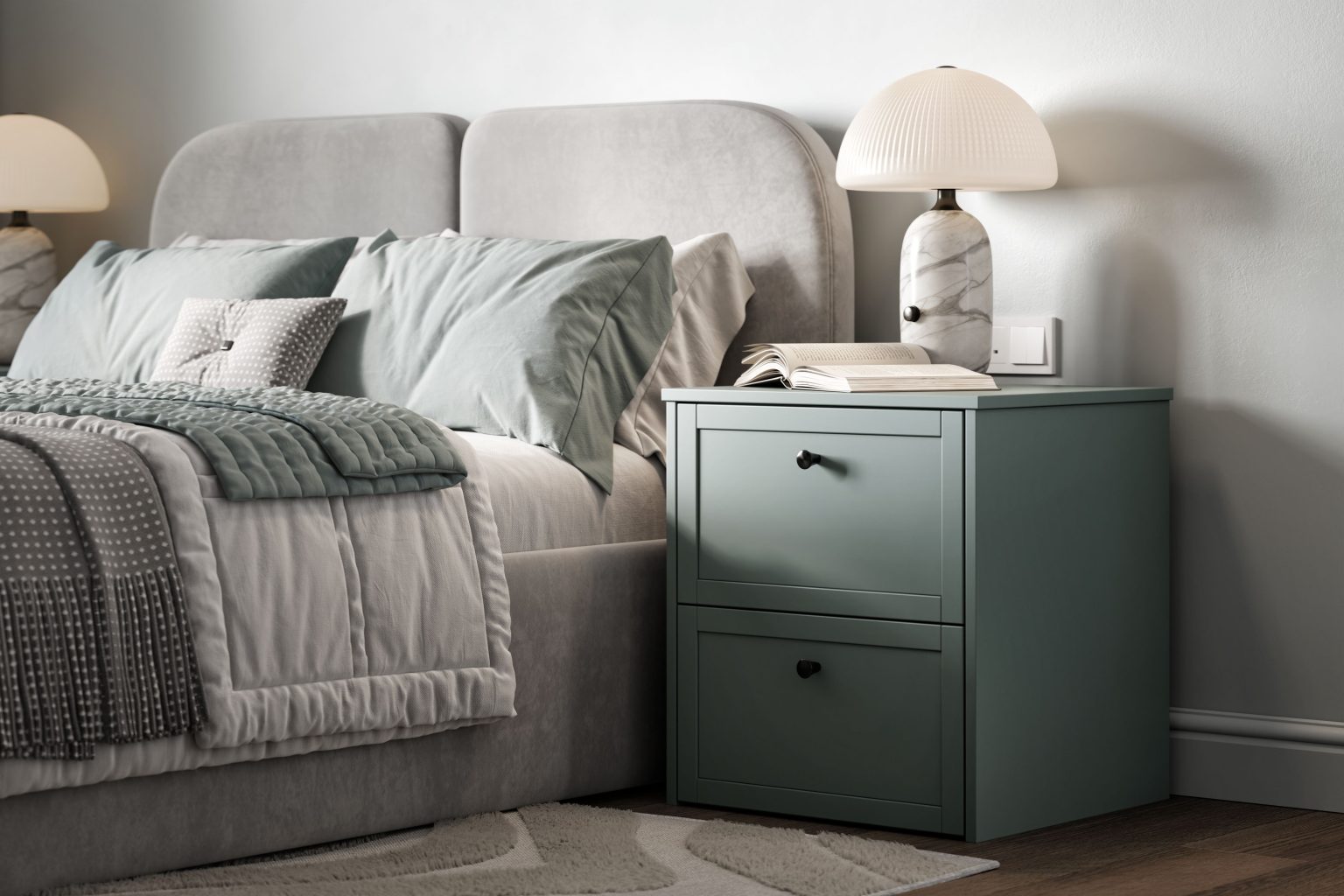- 1 in 5 people don’t get enough sleep.
- Sleep is more important in winter, with short days and dreary weather contributing to lower energy levels.
- Joanne Dodsworth, Head of Bedrooms at Wren, shares the perfect calming colours for your room – and which to avoid.
According to interiors experts, there should be a lot of thought behind designing your bedroom, as it’s one of the most frequented areas of the home.
Not only this, but it’s where we get our well needed rest. Worryingly, one in five people don’t get enough sleep, suggesting their environment may be affecting sleep1.
Many factors may come into play here, such as diet, lifestyle and external stressors, but Joanne, Head of Bedrooms expert at Wren, claims people can improve their quality of sleep through well-thought out, yet simple design choices.
“Whilst colour and sleep aren’t directly related, colours can have a significant impact on our mood and emotions, with low mood negatively affecting our sleep. This is why choosing a colour palette that either calms, sooths, or uplifts you is a key ingredient to the perfect night’s sleep.”
Quality sleep is even more important for energy levels throughout the winter months, as shorter days and bleaker weather make people feel more drowsy and tired during the day.2
With this in mind, Joanne shares how to create a peaceful bedroom space through simple colour and design choices.
Blue, green and white are the best colours to enhance sleep, according to Joanne.
Blue.
“People associate blue with peace and tranquillity as it is synonymous with clear skies and a cooling bed of water, resulting in a feeling of relaxation. Some people even relate blue with a feeling of security4, which is essential for a good night’s sleep.
If blue washed walls or fitted wardrobes are too eclectic for your taste, look to incorporate this colour through soft furnishings, such as pillows and throws. A blue headboard is a bold design choice which can bring together a calming space.”
Green.
Green has a similar effect, as Joanne explains, “Green is synonymous with nature, evoking a sense of calm. Pairing green with neutral-coloured accents will balance out the space and give the bedroom an earthy feel, whilst pairing with light blues can softly brighten the space for a completely zen atmosphere.”
Neutrals.
Keep it simple with neutral colours, says Joanne. “Neutral colours, such as whites, creams, beiges and other gentle tones that help create a relaxing vibe.
You can add visual interest through layering different shades of these neutral colours, whilst incorporating a mix of plush, soft materials in whites and creams bringing the tranquil bedroom together through textural interest.”
Colour choices that disrupt sleep.
Lack of sleep has been linked to poor focus, anti-social behaviour, weakened immune system and stress3, meaning the following bedroom design choices are to be avoided where possible.
Whilst it may be a good idea to paint your bedroom white, blue or green, the tone and shade are equally as important, Joanne adds. “It’s all about layering tones to keep the room feeling inviting. Stick to pale or muted versions of these colours to keep the look calm and avoid anything too bold or bright.
I would personally suggest an off-white, as pure white can often appear clinical and stark. For blues and greens, bright, neon shades are not suggested, as they evoke energy and alertness, stimulating the mind.
Equally, utilising too many deep, dark hues, such as navy or forest green in one area, are potentially counteracting your sleep, as they have been known to evoke negative feelings, such as sadness and loneliness.”
For further bedroom inspiration, please visit: https://www.wrenkitchens.com/bedrooms
